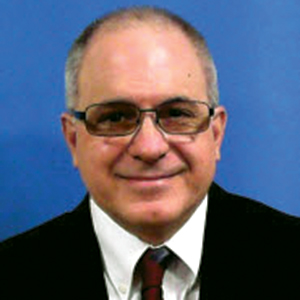The mental health of employees is an important, and overlooked, issue. From a practical perspective, undiagnosed mental health issues can result in decreased employee presenteeism. If an employee is distracted by a mental health disorder, that inability to focus because of the symptoms could disrupt an employee’s ability to perform and produce to the expected level. Compared to a peer group, the affected person may be performing less or less consistently. They might also miss work or arrive late. If the person is working as part of a team, that team could become less functional.
Fortunately, it’s possible to equip employers with the information they need to notice any symptoms of a mental health need displayed by employees. This isn’t to say employers should attempt to diagnose their workforce. But instead, it can help them recognize that what’s getting in the way of an employee showing up, being present and performing could be a significant mental health issue such as post-traumatic stress disorder (PTSD) or obsessive-compulsive disorder (OCD).
Smart Business spoke with Demetrios Marousis, Director of Behavioral Health at Highmark Inc., about strategies for employers to address PTSD and OCD in the workplace.
What are PTSD and OCD?
Some of the symptoms of PTSD include vivid flashbacks of a traumatic event. It can include intrusive thoughts, or images or nightmares related to the trauma, which could affect the person’s sleep.
When a triggering event occurs, it can lead the person to feel intense distress that includes physical sensations such as pain, sweating, nausea and trembling. There’s a degree of alertness or hyper vigilance when reminded of the trauma. Affected people can become easily upset or angered.
OCD is characterized by disruptive obsessions — intrusive thoughts that drive compulsive behaviors. An example would be the thought that the oven was mistakenly left on, which drives the need to check the oven in order to relieve the anxiety caused by the thought. OCD behavior can also materialize as repetitive actions — keeping materials on one’s desk in a particular order, being sure to reset them if they’re disturbed. For these behaviors to rise to the level of being classified as symptoms of OCD, they need to be disruptive to a person’s life.
How can an employer identify somebody who has PTSD, OCD?
The best approach, from an employer standpoint, is to talk to an employee who is falling behind at work to try to understand what is getting in the way of their performance. Employers should not attempt to diagnose an employee. Many of the symptoms of PTSD and OCD can overlap with more common issues. An accurate diagnosis requires a trained medical professional to dig into an individual’s history, and the expression and patterns of the symptoms, to get to a refined diagnosis. Employers can, however, define the issues that are affecting the employee’s performance, then clarify their performance expectations and offer resources through the company’s benefit plan for support.
Employers engaging employees should understand it likely will take ongoing interactions and conversations to get a better understanding of the issue. Often, even if someone with a diagnosable disorder offers an answer, it can sound like an excuse. And while they may say it’s under control, the behavior is likely to reoccur. A well-equipped employer has the vocabulary, sensitivity and awareness to talk about mental health in a way that’s not pejorative or stigmatizing, but that communicates their willingness to work with the employee.
What should be done once an employee’s challenge is identified?
Mental health issues may be a complicating variable behind certain workplace behaviors. While there should be an effort to understand and accommodate the affected employee, it doesn’t mean accepting a persistent expression that negatively affects the work culture.
Fortunately, for OCD and PTSD, there’s treatment available. People can be symptom free if they access good care. Employers can be at the forefront of encouraging people to pursue pathways to secure treatment. Doing so can bolster the workforce because they’re not losing trained and competent employees. ●
INSIGHTS Health Care is brought to you by Highmark Blue Cross Blue Shield

